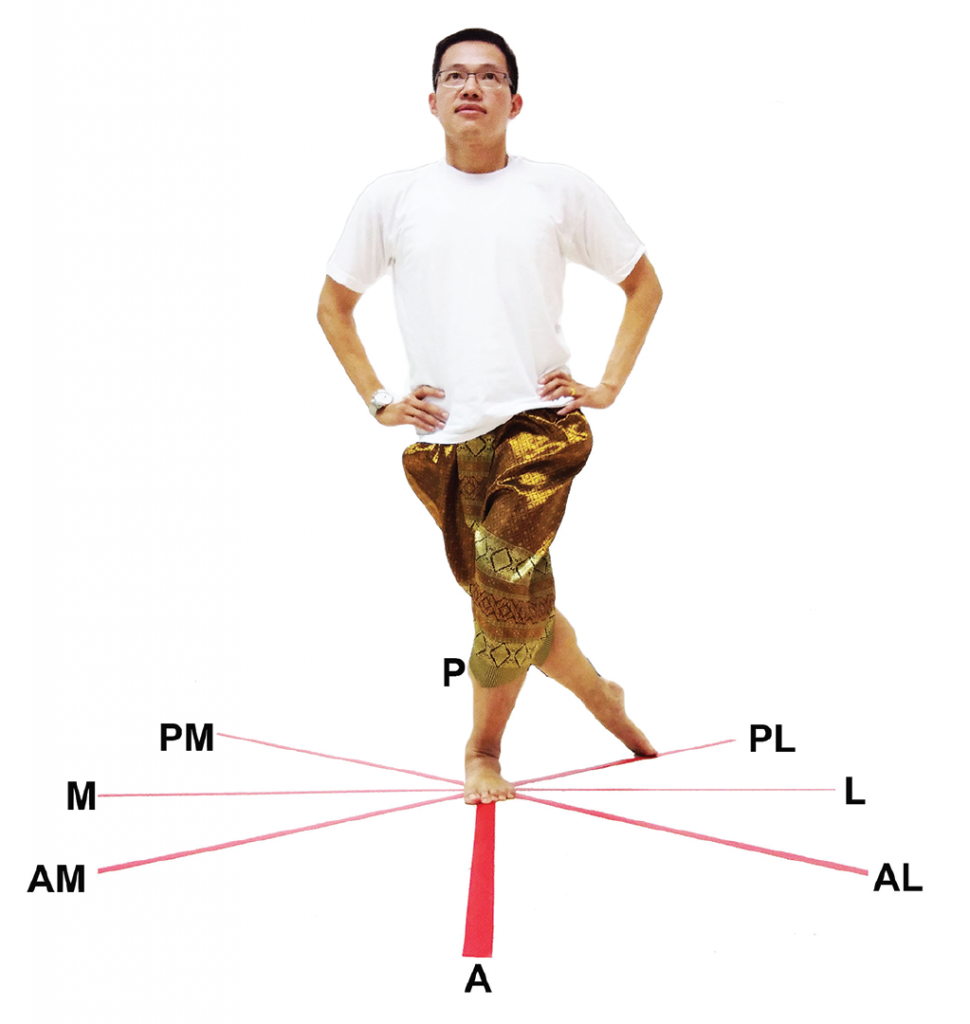
Figure 1 Star excursion balance test (SEBT) on the right side. The directions were identified by the standing leg.
Highlight
งานวิจัยชิ้นนี้ถือได้ว่าเป็นงานวิจัยชิ้นแรกที่ได้ตีพิมพ์ถึงผลของการฝึกในนักแสดงโขนที่มีต่อความสามารถในการทรงตัว การศึกษาถึงการควบคุมการทรงตัวมีความสำคัญอย่างยิ่งในการวิเคราะห์ถึงคุณประโยชน์ของนาฏศิลป์ไทย และยังส่งเสริมให้เกิดการต่อยอดการประยุกต์และนำศิลปวัฒนธรรมของไทยมาใช้ในการป้องกันและอาจสามารถนำมาใช้ในการเพิ่มความสามารถในการทรงตัวในกลุ่มผู้สูงอายุและผู้ป่วยที่สูญเสียการทรงตัวได้ และผู้ที่ความบกพร่องของระบบประสาทกล้ามเนื้อได้ในอนาคต

Figure 2 Presented mean normalized distance of SEBT between Thai Khon dancer and nondancer in (A) dominant leg, (B) non-dominant leg, and (C) both legs. Abbreviations: anterior (A), medial (M), lateral (L), posterior (P), anteromedial (AM), anterolateral (AL), posteromedial (PM), and posterolateral (PL).
ที่มาและความสำคัญ
การศึกษาชิ้นนี้ได้ทำการวิเคราะห์ถึงความสามารถของนาฏศิลป์ไทย ในการควบคุมการทรงตัวเปรียบเทียบกับกลุ่มควบคุม งานวิจัยชิ้นนี้ได้ใช้เครื่องมือที่สำคัญในการประเมินถึงความสามารถในการทรงตัวแบบภาคสนาม (Field test) ที่มีชื่อว่า Star Excursion Balance Test (SEBT) โดย SEBT นี้สามารถใช้ในการประเมินความสามารถในการทรงตัวใน 8 ทิศทาง และทำการวัดระยะที่ผู้ถูกทดสอบสามารถก้าวขาไปไปได้ไกลมากที่สุดในทิศทางนั้น ๆ โดยการประเมิน SEBT นี้ สามารถแสดงถึงความสามารถของผู้ถูกทดสอบในขณะเคลื่อนไหว (Dynamic balance) นอกจากนั้นยังสามารถใช้เป็นแบบทดสอบเบื้องต้นถึงความสามารถของนักกีฬารวมทั้งกลุ่มบุคคลทั่วไปเพื่อวิเคราะห์ถึงข้อจำกัดในการเคลื่อนไหวและการทรงตัว อันเนื่องมาจากการสูญเสียความยืดหยุ่น (Flexibility) 8ความแข็งแรง (Strength) และปัญหาที่เกี่ยวข้องกับการรับรู้ความรู้สึกของข้อต่อ (Proprioception) ซึ่งเป็นองค์ประกอบสำคัญในการควบคุมการเคลื่อนไหวและการทรงตัว (Balance performance control) งานวิจัยชิ้นนี้มีวัตถุประสงค์ในการเปรียบเทียบความสามารถในการทรงตัวของผู้แสดงโขนเปรียบเทียบกับกลุ่มควบคุม ซึ่งพบว่ากลุ่มนักแสดงโขนมีความสามารถในการทรงตัวเมื่อทำการทดสอบโดย SEBT ที่สูงกว่ากลุ่มควบคุมทั้ง 8 ทิศทาง โดยเฉพาะอย่างยิ่งในทิศทางที่มีความยากสูงเช่น Anterolateral and Posterolateral แต่ในกลุ่มนักแสดงโขนยังคงมีความสามารถในการทรงตัวที่สูงกว่ากลุ่มควบคุมถึงแม้ว่าจะใช้ขาข้างที่ไม่ถนัดทำการทดสอบก็ตาม ซึ่งเป็นการแสดงถึงผลที่เกิดขึ้นจากการฝึกและการแสดงของนาฏศิลป์ไทย โดยที่อาจเป็นสาเหตุมาจากการเพิ่มประสิทธิภาพของการรับรู้ความรู้สึกของข้อต่อหรือการเพิ่มศักยภาพของการประสานสัมพันธ์ระบบประสาทกล้ามเนื้อ (Neuromuscular integration) จากการฝึกฝนด้วยนาฏศิลป์ไทย
Abstract
The Khon masked dance drama is an authentic Thai classical performance that has been handed down for centuries. The performance has many unique choreographic patterns that are typical of the Southeast Asian performing arts. The Thai Khon masked dance consists of a combination of balance control and limb movement in different rhythms. The grace and beauty of Khon performances are dependent on the precision of the limb movement’s curve, angle, and specific position. The connection between balance control and body movements during performance is crucial. The purpose of this study was to compare postural control between Thai Khon masked dancers and nondancers and explore bilateral asymmetry in postural control during single leg standing between the dominant and non-dominant legs using the Star Excursion Balance Test (SEBT). Thai Khon masked dancers (n = 25) and nondancers (n = 25) were asked to identify their dominant leg and perform the SEBT using both legs. The reaching distances in different directions from the SEBT were converted to a normalized distance for comparison. A mixed model ANOVA and t-test were applied to determine the differences between directions in both the dominant and non-dominant legs. The interaction between dancer and nondancer groups was also verified. The results showed that dancers performed better on SEBT than nondancers in all directions (p < 0.05). In conclusion, Thai Khon masked dancers demonstrated a superior ability to maintain dynamic postural control during the SEBT. When considering all directions together, the dominant side was not a factor that affected postural control during the SEBT. This study adds further supporting evidence that Khon masked dance training improves dynamic balance control and can possibly be applied as a recreational exercise to promote balance performance.
KEYWORDS: SEBT, balance performance, Khon mask dance
Citation: Greater Star Excursion Balance Test Performance in Thai Khon Masked Dancers Versus Nondancer. Warin Krityakiarana, Nopporn Jongkamonwiwat. J Dance Med Sci. 2022 Jun 15. doi: 10.12678/1089-313X.091522a. DOI: 10.12678/1089-313X.091522a
RELATED SDGs:
3. GOOD HEALTH AND WELL-BEING

ผู้ให้ข้อมูล: ผู้ช่วยศาสตราจารย์ ดร.นพพร จงกมลวิวัฒน์
ชื่ออาจารย์ที่ทำวิจัย: ผู้ช่วยศาสตราจารย์ ดร.นพพร จงกมลวิวัฒน์
Tags: balance performance, Khon mask dance, SEBT
